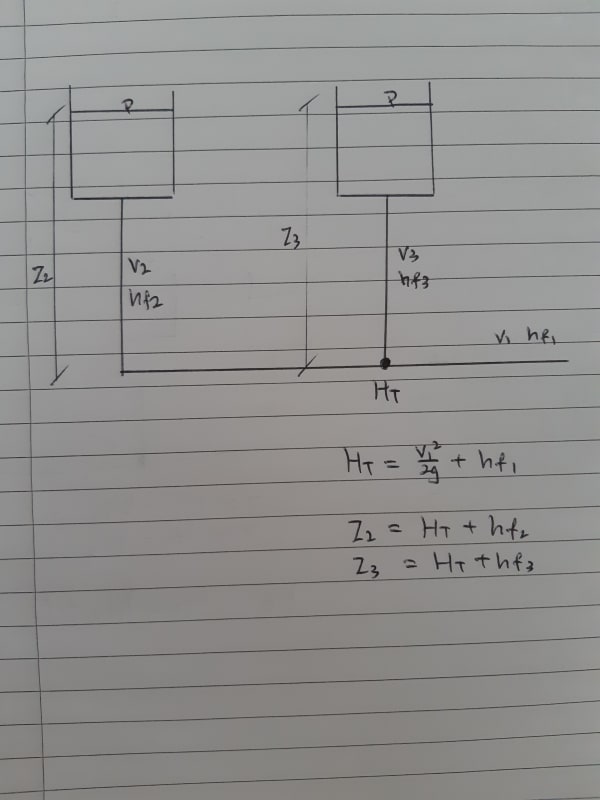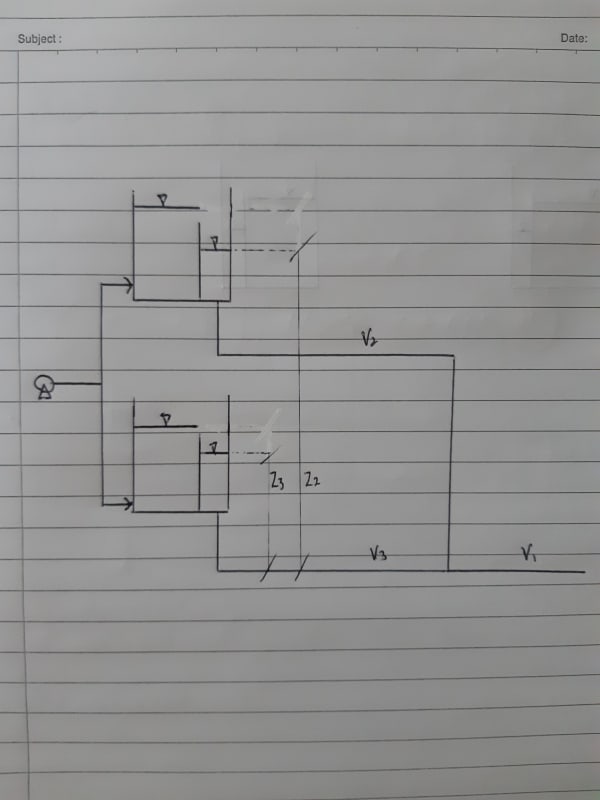Hi,
I have a tank with 2 compartments which are isolated from one another. Each compartment have a discharge outlet pipe (Q1, Q2) which combined together into a single discharge pipe (Q3) somewhere downstream.
The friction factor, length and diameter of the piping are known.
With the total flow (Q3) from the 2 compartments given, I would like to know if it is possible to determine the elevation of the water in each of the compartment. Q1 and Q2 is unknown.
I understand the standard solution for three reservoir problem is an iterative process which begins with guessing the total head at the junction where all the pipe meets, and then with known elevation calculate the flow of each pipe. However over here, the elevation is unknown.
Appreciate if you can share your thoughts. Thank you!
I have a tank with 2 compartments which are isolated from one another. Each compartment have a discharge outlet pipe (Q1, Q2) which combined together into a single discharge pipe (Q3) somewhere downstream.
The friction factor, length and diameter of the piping are known.
With the total flow (Q3) from the 2 compartments given, I would like to know if it is possible to determine the elevation of the water in each of the compartment. Q1 and Q2 is unknown.
I understand the standard solution for three reservoir problem is an iterative process which begins with guessing the total head at the junction where all the pipe meets, and then with known elevation calculate the flow of each pipe. However over here, the elevation is unknown.
Appreciate if you can share your thoughts. Thank you!


